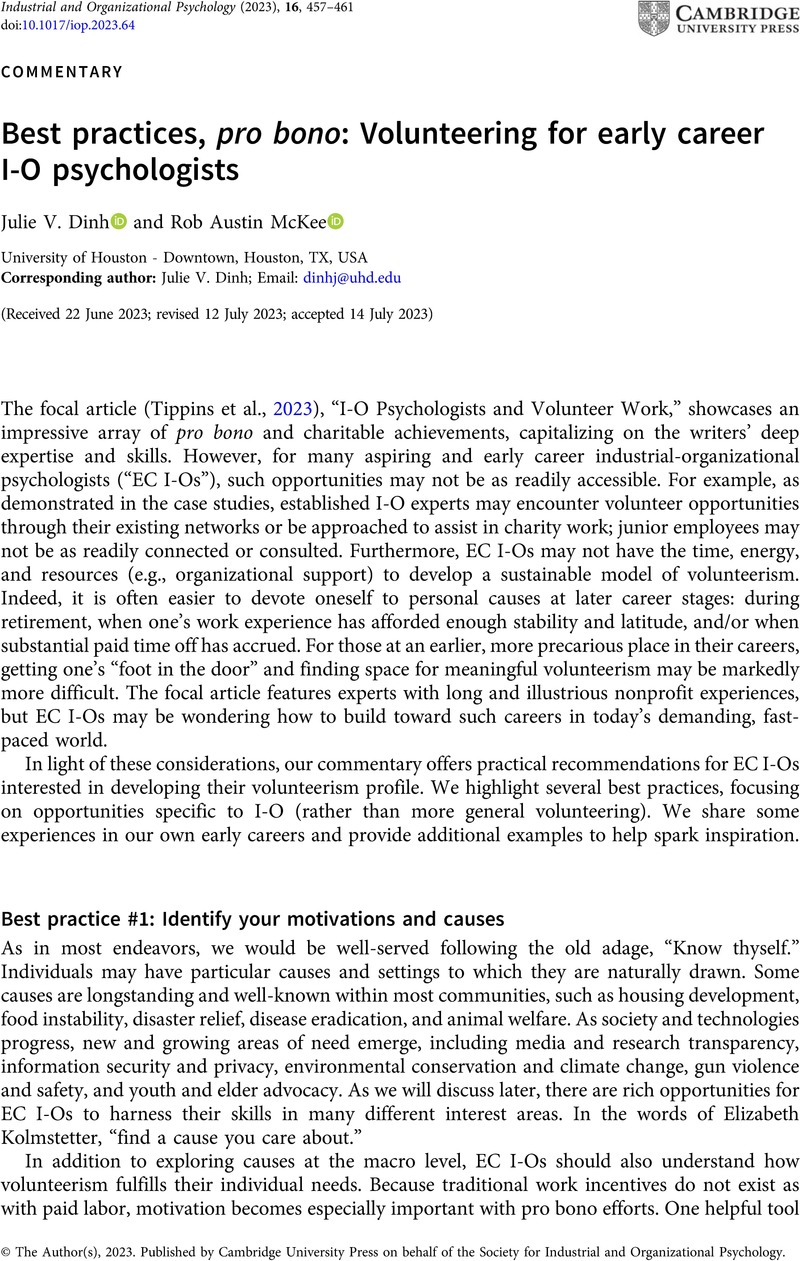No CrossRef data available.
Article contents
Best practices, pro bono: Volunteering for early career I-O psychologists
Published online by Cambridge University Press: 22 November 2023
Abstract
An abstract is not available for this content so a preview has been provided. Please use the Get access link above for information on how to access this content.

Information
- Type
- Commentaries
- Information
- Copyright
- © The Author(s), 2023. Published by Cambridge University Press on behalf of the Society for Industrial and Organizational Psychology
References
Clary, E. G., Snyder, M., Ridge, R. D., Copeland, J., Stukas, A. A., Haugen, J., & Miene, P. (1998). Understanding and assessing the motivations of volunteers: A functional approach. Journal of Personality and Social Psychology, 74(6), 1516.CrossRefGoogle ScholarPubMed
Kimmelman, M. (2017). Lessons from Hurricane Harvey: Houston’s struggle is America’s tale. New York Times. https://www.nytimes.com/interactive/2017/11/11/climate/houston-flooding-climate.html
Google Scholar
Olien, J. L., Dunn, A. M., Lopina, E. C., & Rogelberg, S. G. (2014). Outreach to nonprofit volunteer programs: Opportunity for impact, improving graduate education, and an invitation to become a part of the volunteer program assessment. The Industrial Organizational Psychologist, 51, 51–60.Google Scholar
Tippins, N., Hakel, M., Grabow, K., Kolmstetter, J., Moses, D. O., & Scontrino, P. (2023). I-O psychologists and volunteer work. Industrial and Organizational Psychology, 16(4), 421–432.CrossRefGoogle Scholar

